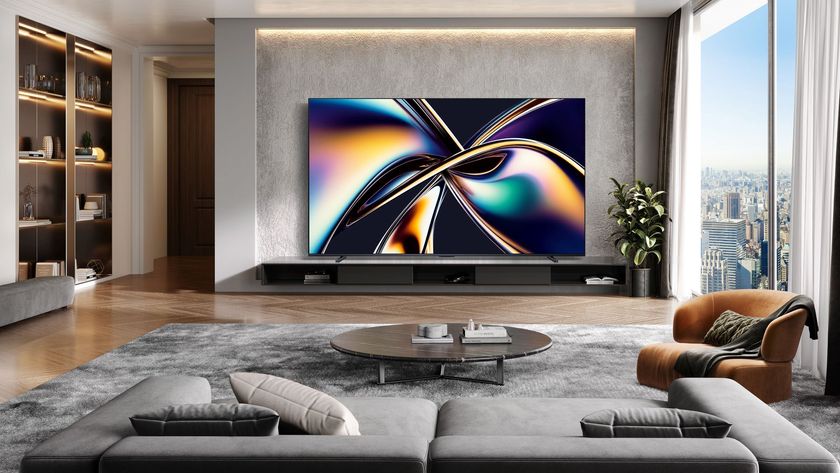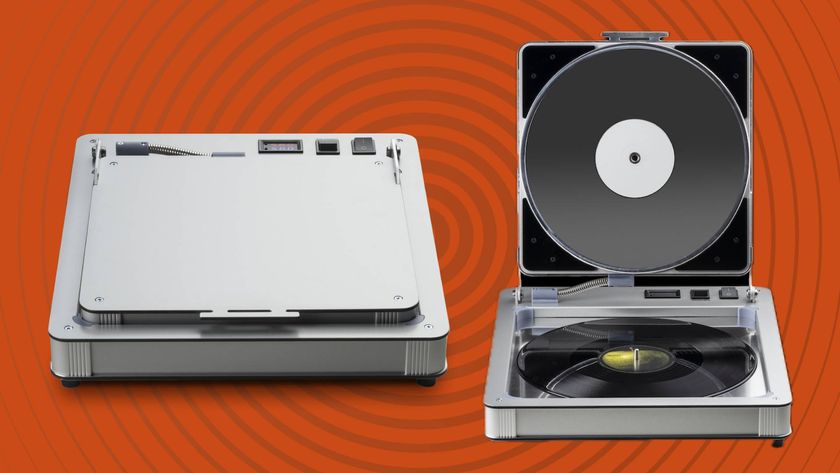Before Episode VII: the behind-the-scenes story of the Star Wars Blu-ray
The Force is strong in this one

The launch of Star Wars on Blu-ray back in 2011 was the biggest thing to happen to the format and techradar was among just a handful of journalists to join Lucasfilm in San Francisco for the launch.
As part of Star Wars week (#techvadar all the way), this is a look back at the amazing experience and access we had, speaking to the visual effects legend Dennis Muren, who worked on the Original Trilogy and the prequels, and Matthew Wood, the audio maestro who looked after the Blu-ray remastering.
And that's not to mention the original props, Ralph McQuarrie paintings and many more Star Wars delights we got up close and personal with on the way.
Remember, even though this was just a few years ago, it was before there was even a mention of Star Wars: Episode VII - The Force Awakens. Before Lucas gave the keys to the franchise to Disney. And a year before the discarded 3D versions of the Star Wars movies were due to hit the big screen.
It all feels like a long time ago…

Explore all of our Star Wars Week content. Come over to the Dark Side...

Lucasfilm may be a company responsible for many of the major technological advances in movie-making, but it also does a fantastic job of making the old feel new. You only have to look at its campus in San Francisco to see this.
Get daily insight, inspiration and deals in your inbox
Sign up for breaking news, reviews, opinion, top tech deals, and more.
The Letterman Digital Arts Centre is refurbished and re-imagined out of the Presidio, an old fortified base, and is now the offices for many of George Lucas' SFX visionaries and the business side of the Star Wars franchise.

It is here where techradar was invited for an exclusive sneak peak of the new Star Wars Blu-ray – apt surroundings, considering that Star Wars has been given another makeover to bring it up to Blu-ray standards; refurbished and re-imagined for the new AV age.
The Star Wars Blu-ray is not just any re-issue, it is a boxset years in the making that has been refined for high definition. Even though Episode IV has 23 years on Episode III, the restoration the movies have been given brings them closer together than ever before.

Couple this with 40 hours' additional footage and the closest look at props, maquettes and costumes you will ever get and this is a Blu-ray boxset that doesn't disappoint.
Given that Lucas once said that sound and music is 50 per cent of the entertainment in a movie, remastering the audio soundtrack has been key to putting all six movies on an even keel. This job was given to Matthew Wood who has been working for Skywalker Sound for 21 years, with a number of those years spent sprucing up the Star Wars soundtrack for a hi-def release.

"It was a long process; I started working on A New Hope around the same time as the DVDs were released. I was already preparing the soundtrack for some sort of high-definition release around that time," said Wood to techradar, minutes before he previewed the soundtrack to us straight from one of Lucasfilm's mixing desks.
"[George] Lucas loves sound; it is very dear to his heart. Skywalker Sound is actually at Skywalker Ranch so we have a very close relationship."
Original production rolls
The soundtrack has been given a massive makeover by Wood and his team. For the first time we get to hear the movies in 6.1 DTS-HD MA, which has meant some hefty tinkering for the Original Trilogy. But with help from Lucas and a surprise find in the archives - actual production roles from 1976 - the audio re-fresh is how Lucas originally intended the movies to be heard.
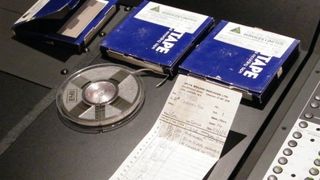
"I wanted to make sure that George for the original trilogy was hearing what he heard when he first made the films, as we're remixing for a 6.1 format, so he spent a long time with us making sure it was right," said Wood.
"On this Blu-ray release one of things that came available to us that we found deep in our archive was the original production rolls.
"These were the rolls that were used for the original dialogue recording and the entire production recording that were done on the set."

Working from such an audio record was a special moment for Wood – a lifelong Star Wars fan – but it was also key to picking up audio cues that had been lost over time.
"These [production rolls] had only been played once, the first time they were used they were transferred to magnetic film back in 1977 and that was cut.
"So I got to take them and retransfer them into the computer and with the highest quality analogue to digital converters I could actually re-sync these back into the original picture. That is one thing that is new on the Blu-ray. It's amazing."
Wood also emulated the recording processes of the time so as to not lose the magic of the soundtrack, borrowing some of the tricks used compiling the original soundtrack to his benefit.

"When I think about what was done with the mixes back in '77, and I was talking to Ben Burtt [the original sound designer] about this, they were working on Star Wars on the night shift, as that was the only way they could get time on the main stage and mixes were done like a performance.
"The entire reel had to be mixed at once. You had somebody working on dialogue, someone on the effects, with all the tracks coming in synchronised from magnetic film machines which were very loud.
"And you have to remember all your favourite moves and what dialogue comes up and your EQ, and it is all done live. I have always found that fascinating and I always want to make sure that I hold on to that performance, because it is a performance.
"We have that mix and are constantly going back and forth and making sure that we are getting that and at the same time trying to expand it for the modern soundstage."
Audio masterclass
The demo we were given of the audio was fantastic. Watching Darth Vader in the carbon freezing chamber in Empire Strikes Back, it was the soundtrack you know and love but it fizzed with extra detail.
Another demo we had was the pod race in Phantom Menace. Wood worked on the prequels with Lucas, so it's no surprise that this is one of his favourite audio mixes. It is also where he has a cameo in the movie - as an unidentified pasty-skinned male Twi'lek.

After having a demo of the new mix, this section of the movie was definitely a stand out – the 6.1 mix of the movie gives the audio a 360-degree feel and the roars of the pods are sublime, with a realism that Wood puts down to how they originally collected the sounds for the movie.
"When I started working on the prequels one of my first tasks was to go out with Ben Burtt and record all the different vehicle sounds.
"The Sebulba pod is a Ferrari that had no sound governor on it so it was really loud. The revs were from a boat I recorded in San Francisco Bay.
"Anakin's pod was a Porsche. There was this race track up north you could go to, all you had to do was paint a number on the side of your car so I did that and got the sound from there.
"I remember I was walking around and there were these concrete tubes in the middle of the track so I put my mic inside one of the tubes and recorded an ambient track. It's the sound they make when they turn through the canyon."
Star Wars Blu-ray changes
The Blu-ray release of Star Wars fixes a number of the visual niggles that ended up on the DVD release of the films. And, no, we aren't talking about Lucas' CGI spray paint here.
Lucasfilm kept quiet about any significant changes Lucas himself has made to the movies, but there have been numerous leaks about what has been changed since our trip.

These include:
- An all-new digital Yoda to replace the puppet in Star Wars: Episode I - The Phantom Menace.
- Ewoks in The Return Of The Jedi now blink, to add some realism to the creatures.
- Greedo definitely shoots first, with no silly jolting in the scene now.
- Obi-Wan's Krayt dragon call in A New Hope has been given more audio resonance
Perhaps the most contentious change is another audio addition: Darth Vader shouting 'Noooooo' in the climax of the fight between Luke and the Emperor in Return Of The Jedi - similar to the end of Episode III.
The changes techradar saw, however, were ones that righted a lot of wrongs. There's been meticulous restoration of some parts of the movie.
With The Phantom Menace, the visual effects supervisors went back to the original digital files of the film, so the image is crisper but there's also 8 per cent of the frame introduced that was missing in the original 2001 DVD release. Some of the 2,000 effects in the film have also been retouched.
Massive makeover
As Episode II and III were shot digitally, these have had the least amount of correction, which meant most of the time was spent on the Original Trilogy.
Unlike the DVD 'special editions', however, which were the biggest restoration of the films so far, the tweaks made are a little more subtle. Blemishes have been removed, picture dirt erased and side effects from old school effects have been taken out.

There's now no 'garbage matte' boxes surrounding the TIE Fighters in Episode IV and the puppet arm that's attached to the Wampa in The Empire Strikes Back has been taken out. These are blink-and-you'll-miss them mistakes, but ones that have irked fans and the makers of the movies for years.
Another change has been re-introducing the white-hot core of the lightsabers, something which was dampened in the DVD version. Now, when the lightsabers of Luke and the Emperor clash in Return of the Jedi they no longer blend as one.
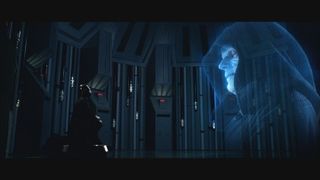
And, those who weren't fans of the 'Emperor's slugs' in ROTJ – a hand drawn shadow on the face of the Emperor that has long been derided – you will be pleased to read this has also been fixed.
The heart of the Original Trilogy's effects very much remain however, and these were down to eight-times Oscar winner and a legend in the special effects field Dennis Muren, who spoke to techradar about his time on Star Wars in one of Lucasfilm's preview cinemas.

"The idea of special effects is now common [but] the Star Wars movies were an original look as they had space battles – the camera angles and stuff were based on real dogfights," said Muren to techradar.
"Nobody had seen what Star Wars was doing, the look of it and that worked for the time. It is this originality which Muren believes is missing from a lot of special-effects movies at the moment.
"I don't mind if CG isn't quite working as long as it is original," he explained.
"The thing I don't like is imitation and I see so much of that going on. People don't have the time to think as it is hard to come up with the budgets so you lose imagination and that's not good."
Cause and effect
As original as Star Wars' effects were, Lucas did decide to tinker with the movies back for the special edition DVD releases of the movies, and it is this version of the movies that has been given the picture upgrade for the Blu-ray.
While this will (still) annoy true die-hard fans, Muren wasn't against the changes made to the movies.

"When it comes to the stuff I worked on and you can see some of the fakeness, I don't really have a problem with that. I don't mind if stuff like that shows up.
"When George was doing some re-dos on the original Star Wars, though, I was all in favour for that as we had run out of time anyway.
"I wanted to re-do around 30 to 40 shots and at some point I think it is okay, but to go back and try and continuously update a film to fit in with the latest technology I don't really know what to think about that.
"If it means getting rid of the garbage mattes that really messed up the original VHS of Star Wars then that's fine.

"When they came out everybody thought that was how it looked in the cinema when they were first released but it wasn't. That was because the transfer wasn't done quite right.
"I am all for changing things to get it back to how it looked originally in the cinema. As long as the original version is always available, beyond that then you can do what you want."
With this in mind, we quizzed Muren on the upcoming 3D versions of Star Wars, which will begin to hit cinemas in early 2012.

"The only reason the 3D versions are coming out is because it is the future. I love 3D when it is done right but I don't think people are doing it right. For me it is way too cautious.
"If there is a way in the future to do a hologram version [of Star Wars] and the fans want it then it should be done. You don't just want to stop making movies and keep releasing old ones, though.
"These releases should be seen as a supplementary thing."
As we leave Lucasfilm, passing a life-size model of Boba Fett, and say goodbye to Javva The Hutt coffee stand, we can't help thinking that the Blu-ray release of Star Wars isn't the end of the movies in the home; this is a franchise that will continue to live on and, as Muren said, will be transformed for each upcoming new technology.

From what we have seen, Lucasfilm has done a fantastic job bringing Star Wars to Blu-ray, creating a package that from an audiovisual point of view future proofs the movies but in the extras also celebrates its past. From what we have seen, it's the Star Wars release you have been waiting for… at least until the holographic versions come out.
Or, George Lucas sells the franchise to Disney for billions and a boatload of new Star Wars films are announced. But that's a story for another day.
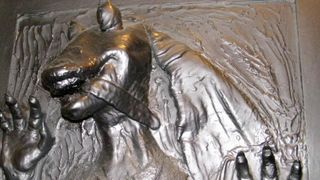
- This majority of this article was first published in 2011 and forms part of techradar's Star Wars week.
Marc Chacksfield is the Editor In Chief, Shortlist.com at DC Thomson. He started out life as a movie writer for numerous (now defunct) magazines and soon found himself online - editing a gaggle of gadget sites, including TechRadar, Digital Camera World and Tom's Guide UK. At Shortlist you'll find him mostly writing about movies and tech, so no change there then.







